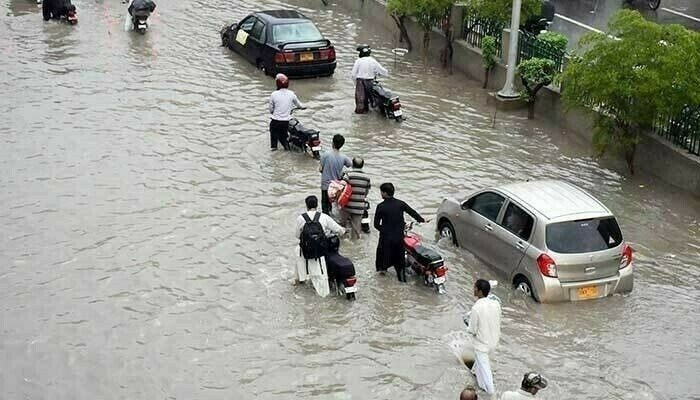MULTAN/LAHORE: Authorities have placed 11 districts of South Punjab on high alert as a dangerous flood surge continues downstream, threatening to inundate Multan and other major centres. Emergency measures include the use of controlled demolitions with explosives on embankments to divert water and safeguard densely populated areas.
According to the Punjab Relief Department, more than 400,000 people have been evacuated from 138 locations, with nearly 481,000 residents and 405,000 livestock relocated to safety. Over 1.5 million people across 2,300 villages are affected, in what officials describe as the largest rescue operation in Punjab’s history.
Over 800 boats and 1,300 rescue workers are engaged in evacuation efforts, while more than 500 relief camps are operating. Authorities assured that “no life is being left unattended” as 24/7 operations continue.
Three rivers in simultaneous flood
For the first time in Pakistan’s history, the Ravi, Chenab, and Sutlej rivers are all in high flood simultaneously.
-
Chenab River: A very high flood, estimated at up to 800,000 cusecs, is advancing towards Multan. Authorities have identified five dykes — Basti Sanki, Basti Duaba, Chak Rohari, Chak Mithon, and Shershah — for possible controlled breaches.
-
Sutlej River: At Ganda Singh Wala, flows have surged past 385,000 cusecs, submerging large parts of Bahawalnagar, Pakpattan, Arifwala, Lodhran, Kamalia, and Rojhan.
-
Ravi River: Water levels remain high at Balloki (180,520 cusecs) and Shahdara (159,847 cusecs), with repeated warnings issued to residents nearby.
The NDMA has also issued SMS alerts for residents in vulnerable areas near Marala, Khanki, and Qadirabad headworks, warning of dangerous flood levels.
Death toll and damage
At least 30 deaths have been reported so far in Punjab, while thousands of homes and farmlands remain submerged. Farmers in parts of Kabirwala have begun emergency harvesting to salvage crops before floodwaters spread further.
Authorities expect at least 300,000 residents of Multan’s low-lying areas to be evacuated as the flood peak nears within the next two days. Preparations are underway to breach roads and embankments near Head Muhammad Wala if required to shield the city.
Controlled breaches and explosives
Officials have already carried out strategic demolitions of bunds near Athara Hazari in Jhang and Rivaz Bridge to ease pressure on Head Trimmu, displacing thousands from nearby villages. Explosives have also been planted at bunds near Rungpur and Shershah as contingency measures.
Relief Commissioner Nabil Javed defended the drastic steps, saying: “There was no other way to drain the water. We are using all resources to save lives and infrastructure.”
Rising dam levels add pressure
Flood management is further complicated by rising water levels in major reservoirs:
-
Tarbela Dam: at maximum conservation level (1,550 feet) with 188,500 cusecs inflow.
-
Mangla Dam: at 1,223 feet, with inflows of 28,400 cusecs.
-
Rawal and Simli dams: near full capacity.
Downstream releases: 206,300 cusecs at Kalabagh, 222,700 at Taunsa, 335,800 at Guddu, and 229,500 at Sukkur.
Kasur and Sulemanki under threat
In Kasur, officials are preparing to breach the Right Retired Embankment to protect the city. Mosque announcements are urging residents to evacuate. PDMA has also warned of rising flows at Head Sulemanki within the next 48 hours.
By September 4, floodwaters of up to 925,000 cusecs are projected to reach Panjnad, while nearly 1 million cusecs are expected to enter the Indus River at Guddu Barrage by September 6, 2025.
Authorities have urged people in low-lying and riverbank areas to remain vigilant, stressing that the situation remains fluid and dangerous as heavy rains continue across Punjab.



